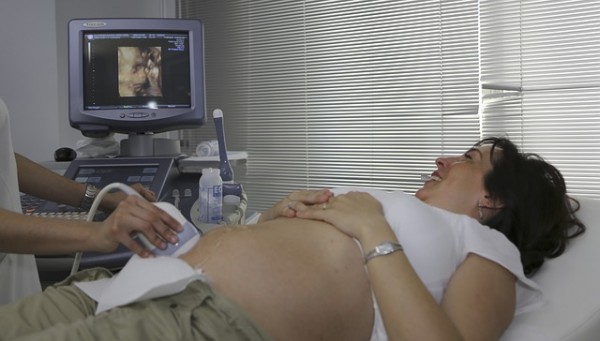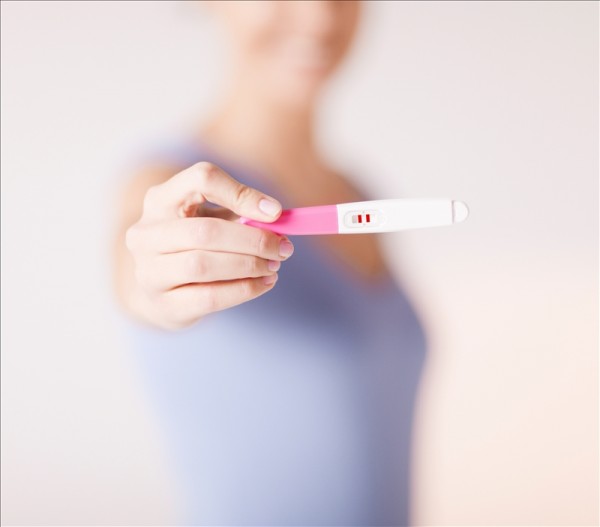Pregnancy testing
Thanks to over-the-counter home testing, a woman can find out if she’s pregnant even before she’s missed her first period.
Whether you pee on a stick, a strip or into a container, home pregnancy tests all work about the same way. They check the urine for HCG, a hormone that is released during pregnancy.
Some tests claim reliability as early as five days before a missed period. But every woman is different. Some may secrete HCG later and some more slowly than others.
The longer you wait, the more accurate any test is likely to be. The time of day you do the test may also influence the outcome. Ideally, you should do it first thing in the morning, when urine is more concentrated.
One test now on the market not only tells you if you’re pregnant, it also estimates the number of weeks since you conceived. Dr. Michael Pinette, Director of Maternal-Fetal Medicine at Maine Medical Center, says it quite accurate on the first count, but not so much on predicting when you ovulated.
The problem is that the test is based on an average 28-day menstrual cycle, with ovulation on day 14. Many women are not that regular and have longer or shorter cycles. The best way to pinpoint how far along you are is to have an ultrasound.

MedicalPrudens / Pixabay
Prenatal testing
Once you have confirmed that you’re pregnant, you’re likely to be offered a number of prenatal tests, including non-invasive genetic testing.
The rule of thumb for the past two decades has been maternal serum screening for women considered at low risk. It includes testing that identifies the risks of Down syndrome, trisomy 18 and neural tube defects. “You would have a blood test at 13 weeks,” says Dr. Pinette, “followed by another blood test at 16 weeks.”
Ultrasounds are also recommended. One at 13 weeks measures nuchal translucency in a space behind the fetal neck. It’s a fluid-filled space found in all fetuses. An increased measurement is associated with Down syndrome. A second ultrasound is recommended at 17 to 18 weeks.
Many women are choosing a new type of noninvasive genetic test that can be done at 10 weeks. It’s called circulating cell-free fetal DNA testing, and it analyzes fetal DNA circulating in the mother’s blood.
The benefits are that it can be done so early and it’s highly accurate (99%) in predicting the risk of Down syndrome. It also screens for other genetic disorders, including trisomies 18 and 13.
But there are caveats that need to be considered with the test say some health experts, including Dr. Pinette. “The problem,” he says, “is it’s very expensive and not always covered by insurance. Also, it’s often presented as a definitive test. It is not. It is a screening test and it throws in a lot of other
No matter which direction you choose, if you get a positive result, amniocentesis or chorionic villus sampling, both invasive procedures, would need to be done to confirm any disorder.
Dr. Pinette says it’s important that women who opt for the early non-invasive genetic test are also offered ultrasound between 18 and 22 weeks. “If you’re just relying on a blood test to tell you that [the fetus] is normal or not, you’re going to miss the three percent with structural defects,” he says. “Nowadays, we’re looking at blood flow, very detailed cardiac anatomy — it’s very sophisticated.”
And of course, ultrasound can also tell you your baby’s gender. But so can the new 10-week genetic test.
All pregnant women should be given the option of the prenatal testing that is available. They also need to understand their risks, benefits and limitations.
Infertility
But what if you haven’t even been able to get pregnant? If you can’t conceive after a year of trying, both partners should be evaluated. The usual starting point for the man is a semen analysis. Like pregnancy tests, it’s now possible to use a home test.
If there is a problem with the sperm, a procedure called intra-cytoplasmic sperm injection (ICSI) may be recommended. Like IVF, the procedure involves fertilizing an egg outside the body.
It differs from in vitro fertilization (IVF) in that a single healthy sperm is injected directly into the center of each egg. ICSI has improved dramatically in the past 20 years to become a successful male fertility treatment.
IVF, the most common form of assisted reproductive technology has come a long way since Louise Brown, the first “test-tube” baby was born in 1978. Since that day over 30 years ago, more than 5 million babies have been born as the result of in vitro fertilization.
It’s an expensive procedure — more than $12,000 a cycle, not including other procedures that might be needed. Although more insurance companies see infertility as a disease, they don’t always cover IVF.
It’s still not an easy procedure. Two weeks of a drug to suppress the menstrual cycle. About another two weeks of hormone injections to increase the number of eggs you produce. Side effects can include bloating, nausea, vomiting, diarrhea, soreness and weight gain.
One aspect of IVF has improved significantly. Egg retrieval. Now, instead of removing eggs surgically, it’s done transvaginally, guided by ultrasound. It’s a much safer procedure and more eggs can be retrieved.
As IVF technology continues to improve so do outcomes. For a variety of reasons, including increased insurance coverage, Dr. Pinette says some of the risks of the procedure appear to be on the decline. In particular, multiple births. “They are less likely to implant several embryos, which increases the risk of multiples,” he says. “We are now seeing fewer twins and triplets, which are very expensive to take care of. It’s a wise public health policy to pay for things like in vitro fertilization.”
The future
What is on the horizon? Exciting advances. Certainly, things that force us to carefully consider moral and ethical issues but also things that can improve people’s lives.
For instance, scientists are looking at the impact of what is known as fetal growth restriction. “Many late in life illnesses have their genesis in fetal development,” Dr. Pinette explains. “Some babies grow up with a much higher risk of cardiovascular disease, hypertension, diabetes. If we can do a better job of identifying and managing these fetuses early in life, it will have a major impact on the health of your baby in [his or her] 40s and 50s. We have to do it. We can’t not do it.”
When it comes to pregnancy-related testing, things have certainly changed in the 30 years since I had my children. Maybe you feel the same way. What changes have you noticed?


Leave A Comment